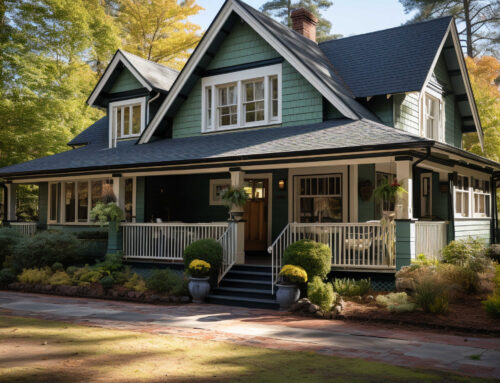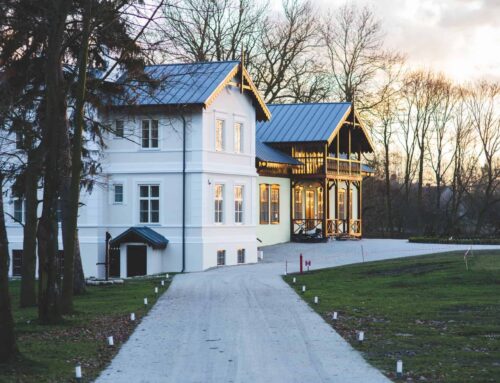San Francisco City approves the New Vacant Homes Tax
Learn what this ordinance means and its impact on investors and homeowners
With a real estate market as competitive as San Francisco, it is very ironic to know that several vacant, unoccupied residential units are within the city. But if you examine the San Francisco real estate market closely, you will learn that there are ample reasons why unit owners and landlords keep their buildings vacant. For instance, some landlords who are looking to sell the building would leave the units empty as old-time tenants vacate and leave the unit. It is believed that vacant units will receive a higher market price compared to tenant-occupied units at the time of sale.
According to census data published in January 2022, the total number of vacant units in San Francisco increased by about 20% between 2015 and 2019, equivalent to 40,500 units in 2019. This gap between housing demand and available inventory paved the way for the approval of the Empty Homes Tax Ordinance.
What is an Empty Homes Tax Ordinance?
The Empty Homes Tax Ordinance aims to disincentivize homeowners with prolonged unit vacancies. Proponents of this law emphasized that it will help increase the number of housing units available for occupancy while raising funds for rent subsidies and affordable housing. But not all properties are affected by this ordinance. For example, owners of single-family homes, duplexes, and buildings with two or fewer residential units are some of the properties exempted from this law.
As a result, individuals with a condo unit, loft, TIC, or any 3-unit building and larger, must file their annual tax with the city in a form and manner prescribed by the tax collector. Failure to comply means you have kept your unit vacant that year and will be taxed accordingly. Needless to say, you always have to be mindful when filing your taxes to avoid getting penalized, especially since the effectiveness of this ordinance begins in January 2024 and runs until December 2053.

How much is the tax penalty for vacant homes?
Under the Empty Homes Tax Ordinance, a property qualifies as vacant if it is not inhabited or occupied for more than 182 days, whether consecutive or nonconsecutive. Thus for homeowners with multiple units, either in a high-rise condominium or a 3-story Victorian house in the Bay area, you must live in your property for at least 182 days. Otherwise, the unit will fall under the category of a vacant home.
And as far as the new ordinance is concerned, vacant homes are subject to tax penalties. Below are the rates homeowners pay for their vacant properties based on (1) lot area and (2) years of vacancy.
- For properties with less than 1,000 square ft., the tax is $2,500 for the first year, $5,000 for the 2nd year, and $10,000 for the 3rd year. For properties under 2,000 square ft., the tax is $3,500 for the first year, $7,000 for the 2nd year, and $14,000 for the 3rd year. For properties with over 2,000 square ft., the tax is $5,000 for the first year, $10,000 for the 2nd year, and $20,000 for the 3rd year. This tax rate assumes that for the three (3) year period beginning 2024 until 2026, your unit is vacant.
- If your property is occupied in the first year (2024) but has become vacant in the 2nd year (2025), the first-year tax rate is used when computing the tax penalty. The same concept applies if the property is vacant only in the 3rd year (2026) but is occupied in the previous years.
Keep in mind that the rates reflected above are adjusted annually in accordance with the increase in Consumer Price Index. Thus, homeowners should take the time to review the imposition of tax in this ordinance.
Property exemptions under the Empty Homes Tax Ordinance
Aside from single-family homes, duplexes, and two-unit buildings, other properties are exempted from the vacant homes ordinance, such as primary residences, units intended for travelers or other transient occupants, and units owned by nonprofit organizations or government entities.
In addition, there are certain circumstances where tax penalties for vacant homes do not apply during specific periods, such as:
- Vacancy due to a building permit application for the repair, rehabilitation, or construction
- Vacancy due to city issuance of a building permit for repair, restoration, or construction
- Vacancy due to a natural disaster that severely damages a qualifying residential unit
- Vacancy due to city issuance of a certificate of final completion and occupancy
- Vacancy due to the death or medical absence of an owner-occupant of a qualifying residential unit.
Where will the proceeds from the new ordinance go?
All proceeds under the Empty Homes Tax ordinance are allocated to the Housing Activation Fund. The funds will be used as rental subsidies for the elderly aged 60 or older and low-income households. Additionally, the funds will finance the city’s undertakings to rehabilitate and acquire new buildings for affordable housing.
We hope this resource provides you with a better understanding of the Empty House Tax Ordinance. If you want to learn more about this new law and how it will affect your properties or even consider selling or renting houses in San Francisco, feel free to contact us. We are more than happy to assist you.




